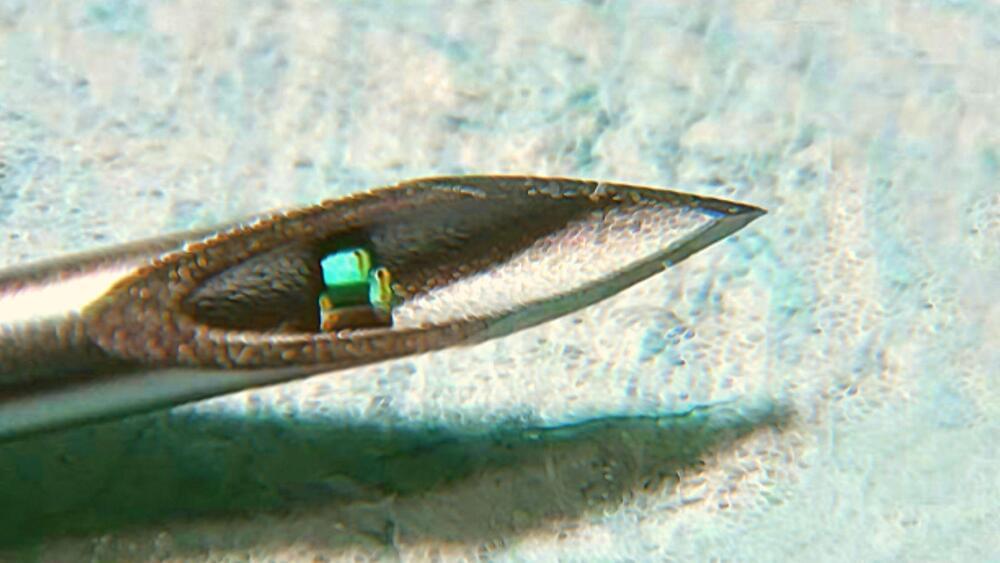A new Android malware named ‘Goldoson’ has infiltrated the platform’s official app store, Google Play, through 60 apps that collectively have 100 million downloads.


In this animation, the differences between bacteria and viruses are explained. How does a bacterium or virus enter the body? And what are typical complaints of a viral or bacterial infection? Finally, the different treatments for bacterial and viral infections are mentioned.
Health TV makes complex medical information easy to understand. With 2D and 3D animations checked by medical doctors, we give information on certain diseases: what is it, wat are the causes and how is it treated? Subscribe to our Youtube channel and learn more about your health!
Healthchannel attempts to make complex medical information easy to understand. With 2D and 3D animations checked by medical doctors, we give information on certain diseases: what is it, wat are the causes and how is it treated? Subscribe to our Youtube channel and learn more about your health!
Healthchannel Youtube channel: https://www.youtube.com/cherishyourhealthtv.
Subscribe here: https://www.youtube.com/subscription_center?add_user=cherishyourhealthtv.
Have a look at our other channel as well:
www.youtube.com/gezondheidspleintv.
Thanks for watching! Don’t forget to like our video and leave a comment.
https://youtube.com/watch?v=QHHrph7zDLw&feature=share
How do viruses make more copies of themselves? They do this by taking over human cells. When a virus infects a cell, it hijacks the protein-making machinery of the cell by releasing its own genetic code, or instructions, into the cell. Now, instead of making proteins for the body, the cell starts working for the virus, helping it replicate. The cell makes more and more virus particles that are released to go on and infect more cells.
Play a Kahoot! trivia game based on this animation: http://www.vaccinemakers.org/trivia.
Watch the related animation, “A Virus Attacks a Cell,” to learn how viruses get into our cells to begin the process of reproduction: https://youtu.be/jkNxmTrrZSk.
Animation created by and for the Vaccine Makers Project.
The Vaccine Makers Project gratefully acknowledges the ongoing collaboration and partnership with XVIVO, creator of medical animations and scientific media: https://xvivo.com.
Copyright © 2016, Medical History Pictures, Inc. All rights reserved.
The Vaccine Makers Project (VMP) is the classroom-based program of the Vaccine Education Center at the Children’s Hospital of Philadelphia (VEC at CHOP). The Center’s team is composed of scientists, physicians, mothers and fathers devoted to the study and prevention of infectious diseases. The Center was launched in October 2000 to provide accurate, comprehensive and up-to-date information about vaccines and the diseases they prevent. The VMP program is committed to public education about vaccine science via scientifically supported, historically accurate, and emotionally compelling content.
Access the VMP’s free classroom materials: http://www.VaccineMakers.org.
Here’s the full recording of the Elon Musk Starship update on Twitter Spaces on April 16 2023.

See why history may hang in the balance on this critical launch attempt.
Inspire your kids to love science!
SAVE 20% OFF New Science Kits Using Code: NEWKITSSAVE20 At Steve Spangler Science dot com! Great Educational Products For Kids! SHOP NOW! https://www.pntra.com/t/SENKTExNSUhDR05OSUxJQ0dPRkxGRw.
Save 1% on GoldBacks from Green Greg’s affiliate link (Use coupon code GreenGregs):
For gardening in your Lunar or Mars habitat GalacticGregs has teamed up with True Leaf Market to bring you a great selection of seed for your planting. Check it out: http://www.pntrac.com/t/TUJGRklGSkJGTU1IS0hCRkpIRk1K
Awesome deals for long term food supplies for those long missions to deep space (or prepping in case your spaceship crashes: See the Special Deals at My Patriot Supply: www.PrepWithGreg.com.
For that off-grid asteroid homestead stock up with Lemans before you blast off:
PBS Member Stations rely on viewers like you. To support your local station, go to: http://to.pbs.org/DonateSPACE
Sign Up on Patreon to get access to the Space Time Discord!
https://www.patreon.com/pbsspacetime.
We humans have always been explorers. The great civilizations that have arisen across the world are owed to our restless ancestors. These days, there’s not much of Earth left to explore. But if we look up, there’s a whole universe out there waiting for us. Future generations may one day explore the cosmos and even settle entire other galaxies. But there is a hard limit to how much of the universe we can expand into. So, how big can humanity get?
Episodes Referenced:
Is Interstellar Travel Possible?: https://youtu.be/wdP_UDSsuro.
What If Humanity Is Among The First Spacefaring Civilizations?: https://youtu.be/uTrFAY3LUNw.
The Edges of Our Universe by Toby Ord: https://arxiv.org/pdf/2104.01191.pdf.
A causal limit to communication within an expanding cosmological civilization by S. Jay Olson: https://arxiv.org/pdf/2208.07871.pdf.



A tiny computer chip was implanted into seven mice at once
The implant created by the engineers at Columbia is record-breakingly small, but it’s also breaking new ground in simply existing as a wholly functional, electronic circuit whose total volume is less than 0.1 cubic millimeter. In other words, it’s the size of a dust mite, not to mention far more compact than the world’s smallest computer, which is a cube-shaped device precisely 0.01-inches (0.3 mm) on each side. The smaller, new chip is only visible with a microscope, and pushed the envelope in power-sourcing and communications ingenuity design.
Typically, small electronics feature radio frequency (RF) modules capable of transmitting and receiving electromagnetic signals, this method generates wavelengths too large to originate from devices as small as the new one. Alternatively, ultrasound wavelengths are far smaller at specific frequencies because the speed of sound is a lot slower than the speed of light at which all electromagnetic waves move. Consequently, the Colombia team of engineers integrated a piezoelectric transducer capable of functioning like an “antenna” for wireless communication and powering using ultrasound waves.